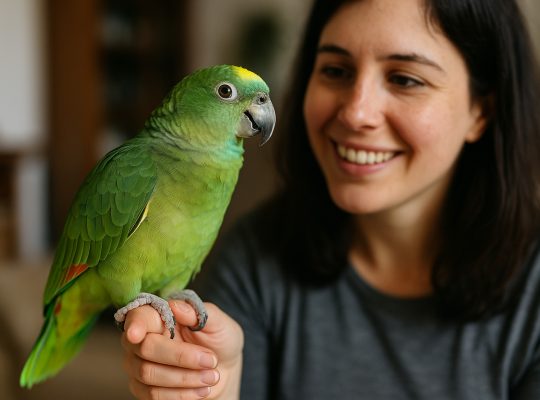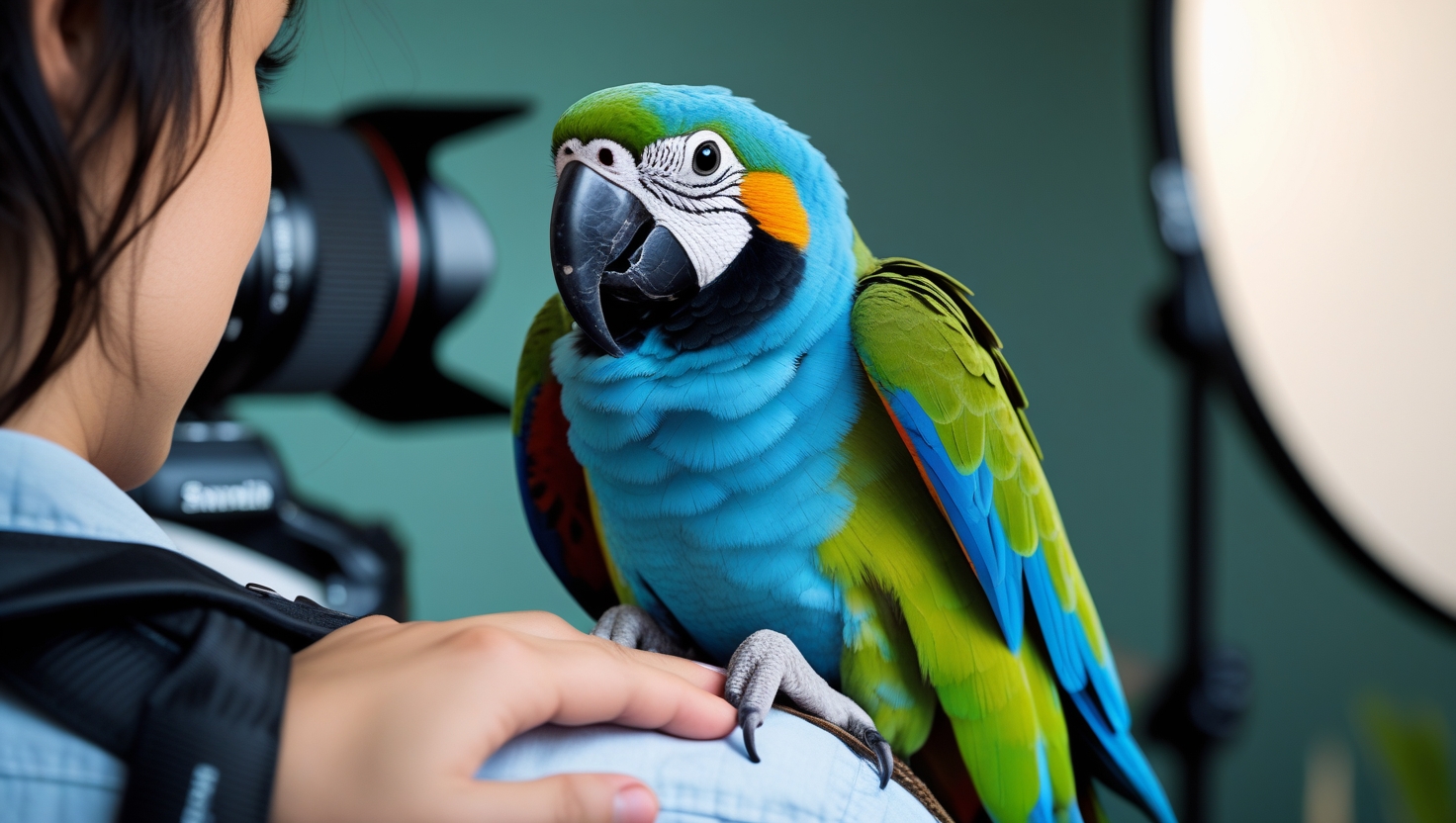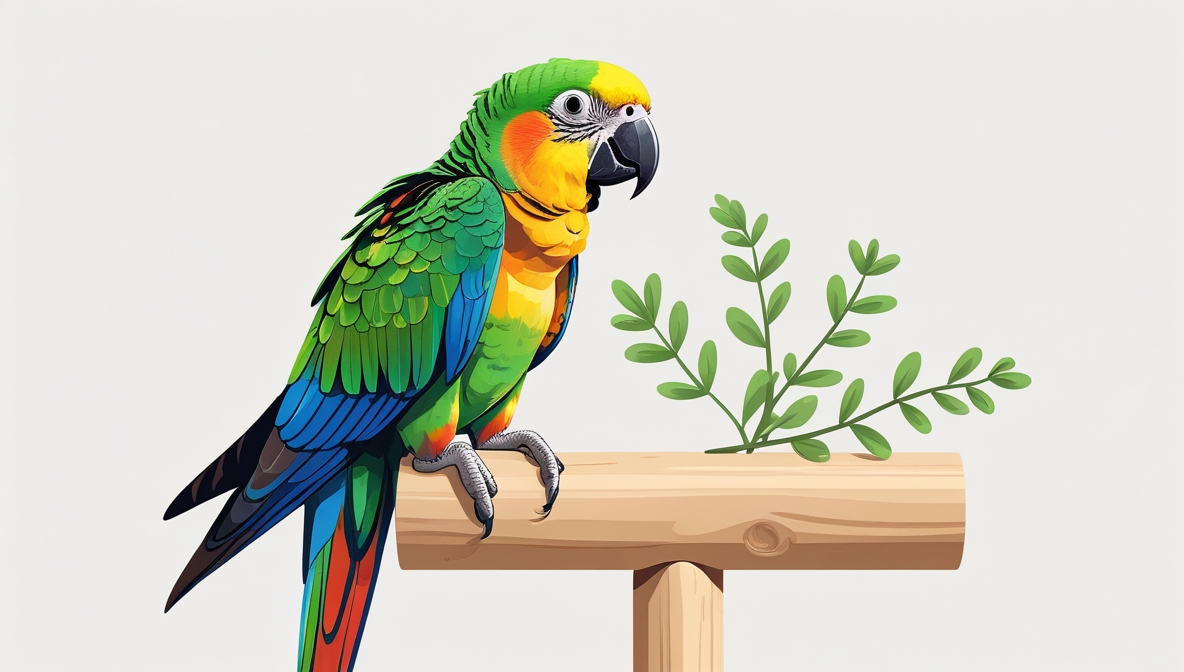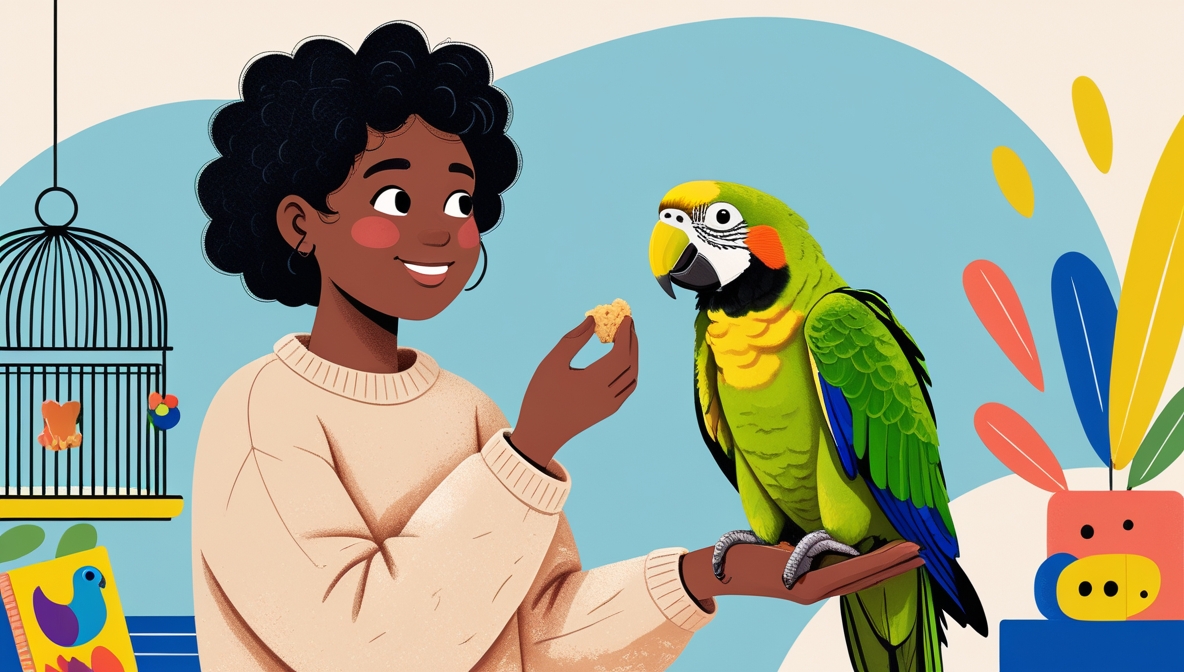Parrots are creatures of habit. A move—especially a long-distance one—can upset their sense of security. Whether you’re relocating across provinces or shifting between cities, careful preparation will help your parrot transition smoothly. This guide outlines practical steps to reduce stress and ensure safety during the journey.
Before the Move: Prep and Conditioning
1. Acclimate to the Carrier
- Introduce the travel carrier weeks before the move.
- Let the parrot explore it at their own pace.
- Place favorite toys and treats inside.
- Keep the door open initially to avoid panic association.
2. Choose the Right Carrier
- Must be escape-proof with solid latches.
- Ensure adequate ventilation on all sides.
- Line the base with a towel for grip.
- Avoid carriers with toxic plastic or metal finishes.
3. Schedule a Vet Check
- Get a full health checkup.
- Request a copy of medical records.
- Ask about motion sickness remedies.
- Discuss microchipping or temporary ID bands.
4. Research Destination Rules
- Some provinces or rental agreements may have pet restrictions.
- Look into any local bird health certificates or quarantine rules.
- Contact your local avian vet for documentation if needed.
Packing for the Trip
Pack a dedicated parrot bag that includes:
- Dry food: Pack enough for the trip plus extra in case of delays.
- Fresh produce: Pre-cut and stored in airtight containers.
- Water bottles: Use spill-proof containers and offer water at rest stops.
- Toys: Bring familiar ones to ease stress.
- Cleaning supplies: Baby wipes, paper towels, garbage bags.
- First-aid kit: Styptic powder, tweezers, saline solution, vet contacts.
Keep this bag easily accessible, not buried under boxes.
Travel Day Strategies
1. Stick to a Routine
Feed and interact with your parrot at normal times. Keeping to their schedule gives them a sense of continuity.
2. Monitor the Temperature
Parrots are sensitive to drafts and heat. Use sunshades on car windows. Never place the carrier directly under air vents or in direct sunlight. Avoid transporting during extreme cold unless absolutely necessary.
3. Reduce Visual Stress
Cover three sides of the carrier with a breathable cloth. This calms the bird by blocking unfamiliar sights while still allowing airflow.
4. Secure the Carrier Properly
- Place it on a flat car seat.
- Secure with a seatbelt or travel strap.
- Avoid stacking boxes near the carrier.
The carrier must not move or slide during braking.
5. Avoid Loud Music or Traffic Noise
Soft ambient sounds or calm conversation help reduce anxiety. Avoid honking or slamming doors near the bird.
Air Travel Considerations
If flying, confirm with the airline:
- Whether parrots are allowed in-cabin or only in cargo.
- Carrier size and type requirements.
- Documentation needed at check-in.
- Fees and seasonal embargoes.
Book direct flights where possible. Avoid connecting flights that increase wait time and exposure.
Call the airline 48 hours before your flight to reconfirm all arrangements.
Hotel and Overnight Stops
1. Choose Pet-Friendly Accommodations
- Confirm that birds are accepted, not just cats and dogs.
- Ask for a quiet room, preferably away from elevators.
2. Set Up a Mini Comfort Zone
- Set the carrier in a low-stress area.
- Offer food and water.
- Dim the lights and speak calmly.
3. Don’t Leave the Bird Alone for Long
Even if caged, a new environment can trigger alarm calls or stress behavior. If you must leave the room, keep the TV or a white noise machine on.
After Arrival: Easing the Transition
1. Set Up the Main Cage First
Before unpacking your household, establish your parrot’s living area. Use the same perches, toys, and food dishes as before. Keep routines consistent.
2. Let Them Observe Quietly
Allow time to observe the new space from a secure area before introducing too much interaction. Avoid having guests over until your parrot appears relaxed.
3. Monitor Behavior Closely
Watch for:
- Appetite changes
- Feather picking
- Excessive silence or screaming
- Fluffed posture or lethargy
If signs persist beyond a few days, contact a local avian vet.
Timing and Cross-Province Awareness
Moving across time zones may disrupt feeding and sleep schedules. Adjust gradually, especially if moving between Eastern and Pacific coasts. If you’re coordinating arrival with services like vet appointments or delivery drop-offs, refer to the current Canada time to keep everything aligned.
Bonus Tips for a Smoother Journey
- Practice short car rides beforehand to build tolerance.
- Label the carrier with contact info and “Live Animal” signage.
- Take breaks every few hours to check on food, water, and temperament.
- Use calming sprays designed for parrots, if approved by your vet.
Moving is stressful for everyone involved, but thoughtful preparation can turn a chaotic relocation into a manageable process. A calm, supported parrot will adjust better and faster, setting the tone for a peaceful new chapter.





